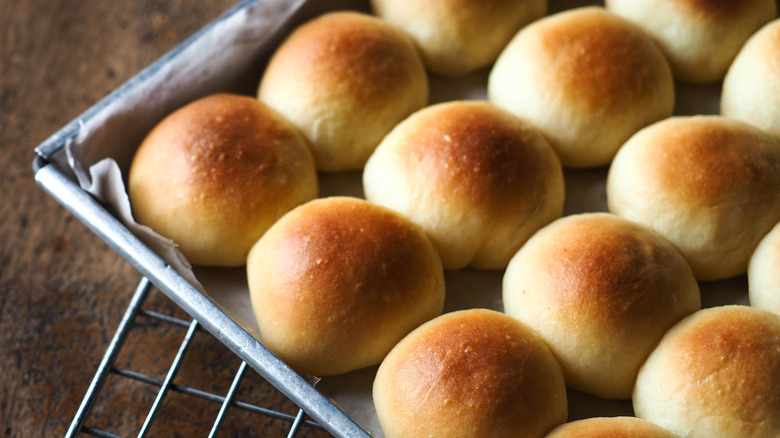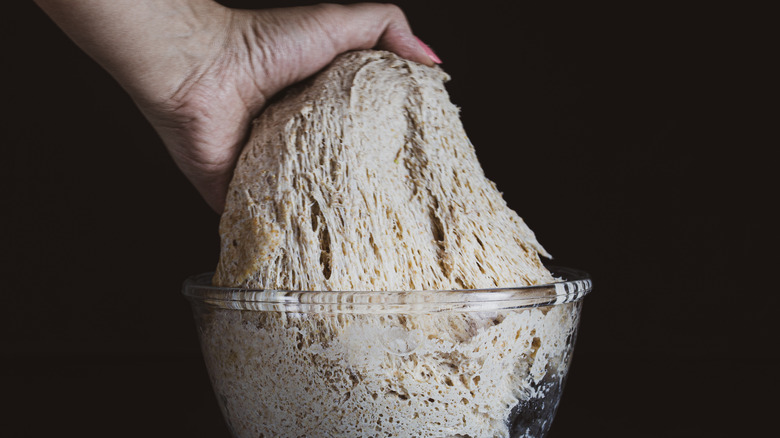How To Avoid Tough Dinner Rolls
Holiday meals, like upcoming Thanksgiving and Christmas, call for the fullest of spreads. Roasted turkey and glazed ham aside, those homemade dinner rolls of yours have the potential to be side dish superstars. Even on weeknights, a quick batch of rolls fresh from the oven can upgrade your meal in simple, yet most elegant, way. Fluffy, warm, and fragrant, the right dinner roll recipe is almost always a crowd-pleaser. Just pull them apart, add some butter, and enjoy.
As classic and as simple that they are, dinner rolls are easily affected by mistakes made at the hands of the baker. Trying recipes from scratch can be intimidating for the novice baker when dealing with possibly unfamiliar things like yeast and kneading, but practice makes perfect. If your dinner roll recipe yields disappointing results — dense rolls that are tough and chewy in texture — there's an easy fix for your next batch.
Take it easy on the dough
Tough dinner rolls are often the result of a common baking error: overhandling. While it's tempting to mix your dry and wet ingredients together into oblivion, less time stirring and kneading the dough is actually better. That's why the familiar pastry-making instruction "mix until just combined" is such an important one to pay attention to.
The science behind those problematic gummy, chewy rolls actually points to gluten. Flour made from grains contains two proteins that hold bread together — glutenin and gliadin. Add in some water and a quick kneading session, and gluten forms in strands, which gives bread its pleasant elasticity. The caveat? Too much time handling the dough results in gluten that is too strong, and a lot of it (via Institute of Food Science & Technology). This will give you tough dinner rolls.
Some flours have higher amounts of protein than others, so keep an eye on that, too. Bread flour and all-purpose flour, common baking ingredients, have high protein content, anywhere from 10.5% to 12.7% (via Epicurious). Cake flour, Food Network shares, has a 5% to 8% protein content, which is why it's often used in the softest baked goods — less gluten development.
Give your dough some time to rest if you suspect you've overdone the kneading process, suggests EatingWell. If too much gluten has formed and the dough is dense, you might need to start over. Still, now you know for next time — don't overdo it!

